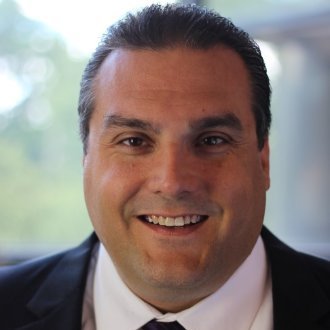Social and mobile technologies aren’t just important for guerilla marketing campaigns and grassroots outreach.
They’re also changing how the world’s biggest broadcast media companies do business.
Mashable recently spoke with top executives and personalities from the sports behemoth ESPN during the company’s biggest week of the year for Super Bowl XLVI. The interviews reveal how the evolution of digital impacts the original mass broadcast medium — what is traditionally thought of as “radio.”
Perhaps nothing shows the shifting landscape better than a recent name change for ESPN’s audio division. Until about three years ago, the entire division — the company’s second-most consumed medium, behind its ubiquitous television presence — was known simply as ESPN Radio.
“Then we said, ‘Looking at the trends out there, we shouldn’t be just ESPN Radio,’” Mo Davenport, a senior vice president and general manager of the company’s audio division, said. “We recognized that we should really be ESPN Audio and realign ourselves with saying that we want to serve sports fans at any time, wherever they are, and on whatever platform they want to be served on.”
That increasingly expands beyond traditional broadcast. In 2011, ESPN Audio podcasts were downloaded 358 million times — a 129% percent increase from 2010. A quarter of digital listening was done through mobile devices, according to company representatives. On the ESPNRadio.com website, more than 10 million listening hours are logged per month, according to measurement company AndoMedia.
During Super Bowl XLVI week, the sports world’s most elaborate annual media circus, ESPN Audio combines with the television division to create 110 hours of programming. The avalanche of content is produced by some 350 producers, writers, editors, event staff and other personnel, according to company representatives. ESPN Audio executives said they expect much of their Super Bowl XLVI week programming to be consumed digitally.
But behind the microphone, it’s social media that has had the biggest impact. Mike Golic, one of the co-hosts of ESPN’s hit radio show Mike Mike in the Morning, said that social media’s “immediacy of reaction” has changed the way he and partner Mike Greenberg operate.
When Golic and Greenberg began their show more than a decade ago, they would solicit listener feedback via phone — and even fax. Assistants would print out faxed-in opinions during breaks to be read and discussed on the air. Now, as their show is both broadcast live on radio stations and packaged for future download, they receive a constant stream of user feedback via Twitter.
Greenberg said that’s especially true during Super Bowl week, “when show prep is basically your life,” and he and Golic report on and discuss not just the game itself but the hullabaloo surrounding its build-up.
“The world has become one continuous conversation that everyone can take part in now,” Greenberg said. “Now you feel like the leader of a huge chat and you’re just in charge of steering it. It’s a fascinating dynamic.”
According to Davenport, that philosophy applies to the ESPN Audio’s executive level too.
“It’s not longer a one-way street, where you have athletes and producers saying, ‘I’m giving you this, be happy with it,’” he said.
“That influence of digital technology is only going to continue to grow,” Davenport said. “It’s going to massively impact our business, but I think that the culture we have around here is, ‘Bring it on.’ People who decide that their businesses can stay static are the ones who will be left in the dust.”
Image of Mike Golic and Mike Greenberg courtesy of Frank Dale/ESPNRadio.com


